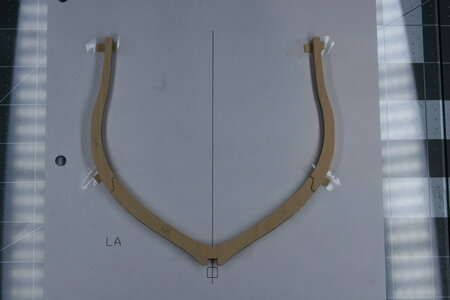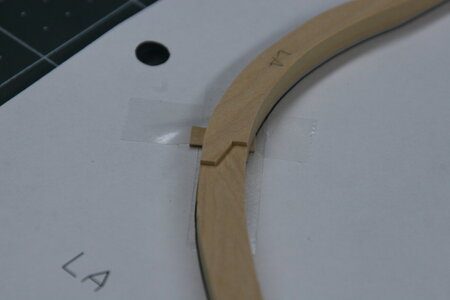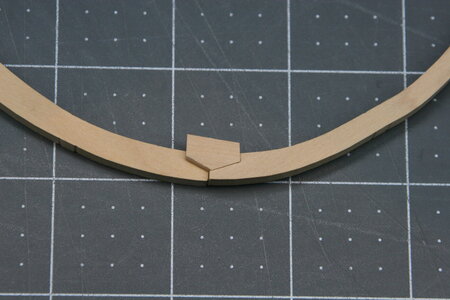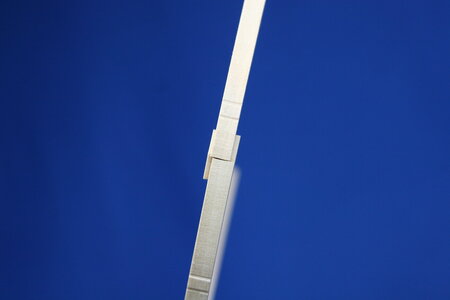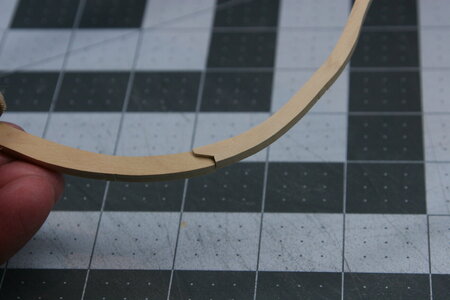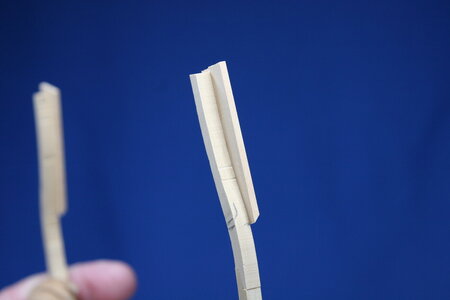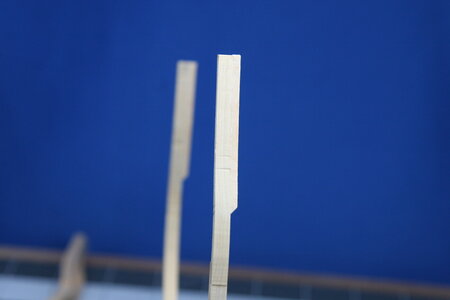- Joined
- Jan 9, 2020
- Messages
- 10,500
- Points
- 938

I am so relieved to hear that there is no saw in your future!Nope. Not going to happen.
You guys are like an evil temptress seducing me with your wily provocations...be strong, Paul, be strong.
 Whew!
Whew!
I am so relieved to hear that there is no saw in your future!Nope. Not going to happen.
You guys are like an evil temptress seducing me with your wily provocations...be strong, Paul, be strong.
 Whew!
Whew!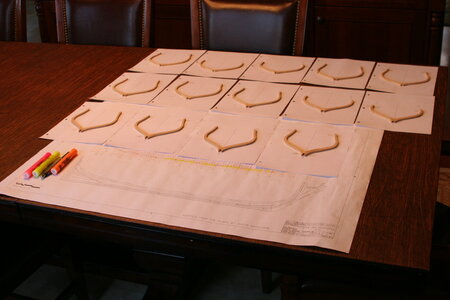
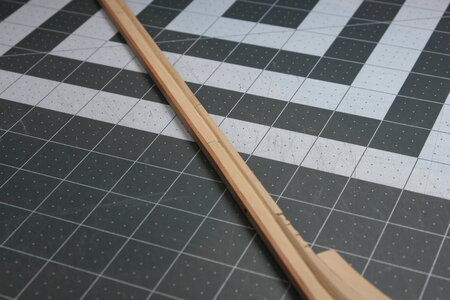
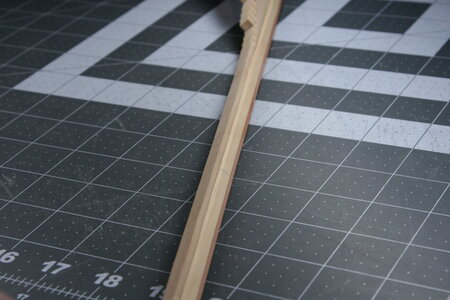
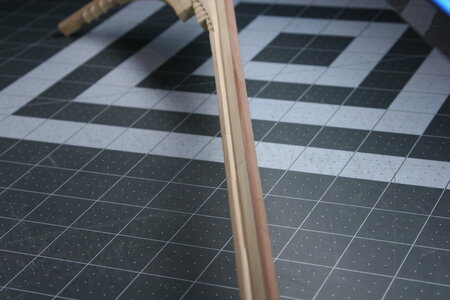
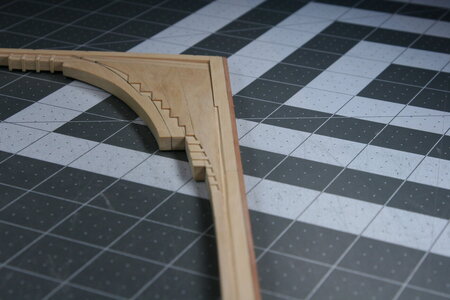
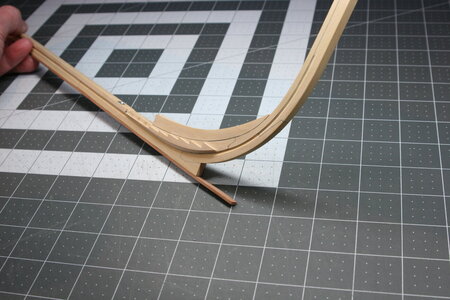
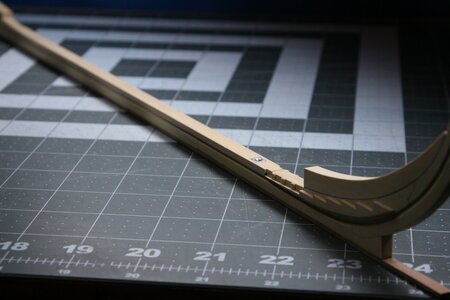

Me, evil? No, never, I don't have a bad bone in my body. I'm merely offering you a suggestion to make this a one of a kind build.Nope. Not going to happen.
You guys are like an evil temptress seducing me with your wily provocations...be strong, Paul, be strong.

It might be a wise idea to hold off finalizing the rabbet until you're further along with adding frames to the keel. At least you'll have a better idea of the flow of the keelson and how the keelson interfaces with the keel.Work continues on the square frames. This bunch is ready for creating the faux chocks and fore/aft surface sanding...
View attachment 358377
I have also now completed the preliminary work on the rabbet. I'll hold off on the final shaping for when the frames are in place (and the hawse timbers in the front and transom pieces in the back). Taking photos of the rabbet was difficult, but these will give you a sense of where I am at...
View attachment 358379
View attachment 358381
View attachment 358382
View attachment 358380
View attachment 358378
View attachment 358383
Thanks for taking the time to stop by! There are some pretty remarkable projects underway on the forum right now (both old and new) - I hope you are all taking advantage of the terrific learning opportunities
Good morning Johan and Paul. Clearly I’m more sinister than you Johan as I truely believe Paul should go for the split hull- some more “wiley provocations” - Paul’s Sirens need to start singingMe, evil? No, never, I don't have a bad bone in my body. I'm merely offering you a suggestion to make this a one of a kind build.
You must have had a hard time taking photos of rabbet, as I don't see Bugg's anywhere in the photos!Work continues on the square frames. This bunch is ready for creating the faux chocks and fore/aft surface sanding...
View attachment 358377
I have also now completed the preliminary work on the rabbet. I'll hold off on the final shaping for when the frames are in place (and the hawse timbers in the front and transom pieces in the back). Taking photos of the rabbet was difficult, but these will give you a sense of where I am at...
View attachment 358379
View attachment 358381
View attachment 358382
View attachment 358380
View attachment 358378
View attachment 358383
Thanks for taking the time to stop by! There are some pretty remarkable projects underway on the forum right now (both old and new) - I hope you are all taking advantage of the terrific learning opportunities!


This is looking very nice, Paul.Work continues on the square frames. This bunch is ready for creating the faux chocks and fore/aft surface sanding...
View attachment 358377
I have also now completed the preliminary work on the rabbet. I'll hold off on the final shaping for when the frames are in place (and the hawse timbers in the front and transom pieces in the back). Taking photos of the rabbet was difficult, but these will give you a sense of where I am at...
View attachment 358379
View attachment 358381
View attachment 358382
View attachment 358380
View attachment 358378
View attachment 358383
Thanks for taking the time to stop by! There are some pretty remarkable projects underway on the forum right now (both old and new) - I hope you are all taking advantage of the terrific learning opportunities!

https://tinyworkshops.com/japanese-saws/It looks great from this angle Paul. The frames looks great as well. It will be a lovely ship, cut in two just above the waterline to see all that beautiful interior...what a spectacle this will be....can't wait!
Peter



Since I've cut a grand total of one rabbet (well, two - one on the port side and one on the starboard) I'm reluctant to think I should be teaching or sharing my approach. But you asked... (I didn't take pictures so you'll have to use your imagination):Question- what methodology did you use to make this.
Cheers Grant

Two drawbacks:Thanks, everyone, for your kind words about my small steps of progress.
I have received the updated vaccine that protects me from the present scourge of ship cutting so I'm safe. But who knows what might happen on a future build.
